News feed
Openness, curiosity, and experimentation: the second season of the Art Residency Programme comes to an end
2024. 06. 13.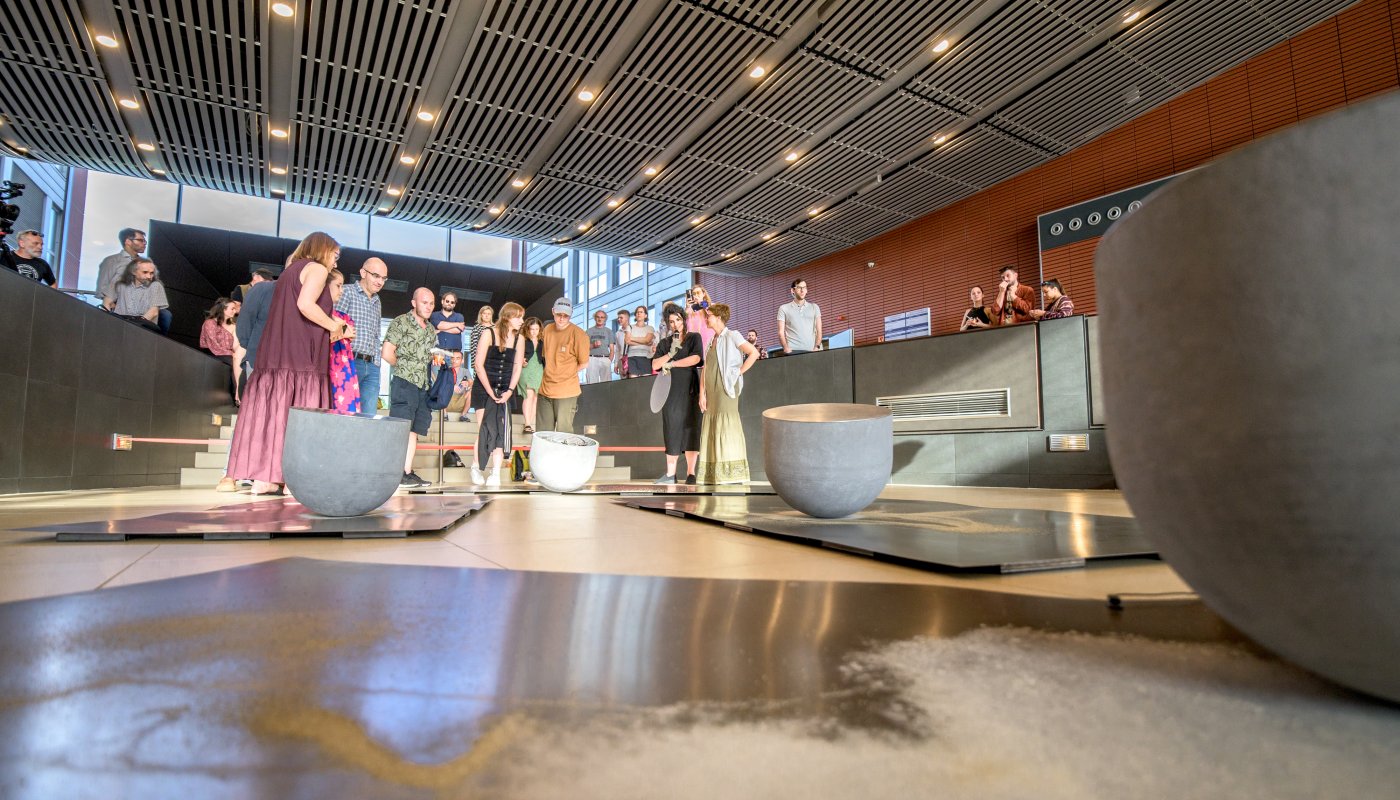
A sculptor and a composer unveiled the outcomes of their collaborative efforts with BME researchers.
“This programme epitomises the university's openness,” said BME Rector Tibor Czigány at the opening of the final exhibition of the 2023-24 season of the Art Residency Programme, relocated to the lobby of the Q building. “The initiative has facilitated collaboration between researchers and artists and has been particularly significant in revitalising our campus after multiple closures in recent years, including the COVID-19 pandemic, temporary campus closures due to rising energy prices, and now the closure of the Central Building due to the flooding of the Danube.”
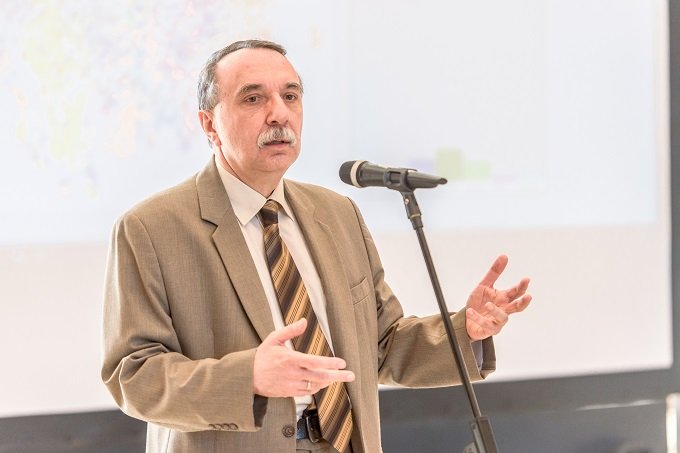
He described the two-year programme as one of the best and most successful undertakings of his tenure, where artists are invited to cooperate with one of the university’s laboratories, resulting in distinctive artworks. He thanked the Hungarian National Bank, the PADME Foundation, and the Pro Progressio Foundation for their support in facilitating the programme.
Similar initiatives exist at prestigious Western universities and research institutions such as CERN, MIT, and the Sorbonne. This year’s scholarship exhibition featured works by sculptor Katinka Hajas and composer Andrea Szigetvári.
Writer György Dragomán, who opened the exhibition, shared that he was delighted to accept the invitation as his participation in various artistic residencies at foreign institutions had significantly influenced his career and provided fresh perspectives on his work. He highlighted that he met with the artists the day before the opening and observed genuine collaboration between them and the BME mentors. Following his introductory remarks, he read a piece he had written for the exhibition, inspired by the displayed works.
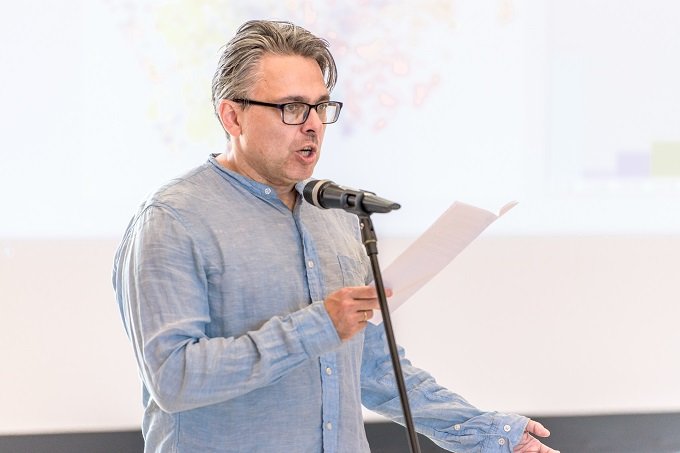
According to Anna Gács, the initiator and main organiser of the BME Art Residency Programme, the initiative has fostered unique opportunities for researchers and artists to connect and collaborate, something not easily achieved in other forums. Beyond the exhibitions and artworks, the programme has also nurtured a community of artists, BME faculty members, and students. The associate professor of the Department of Sociology and Communication at BME also highlighted the significant role played by students in editing the programme’s website and organising the exhibition.
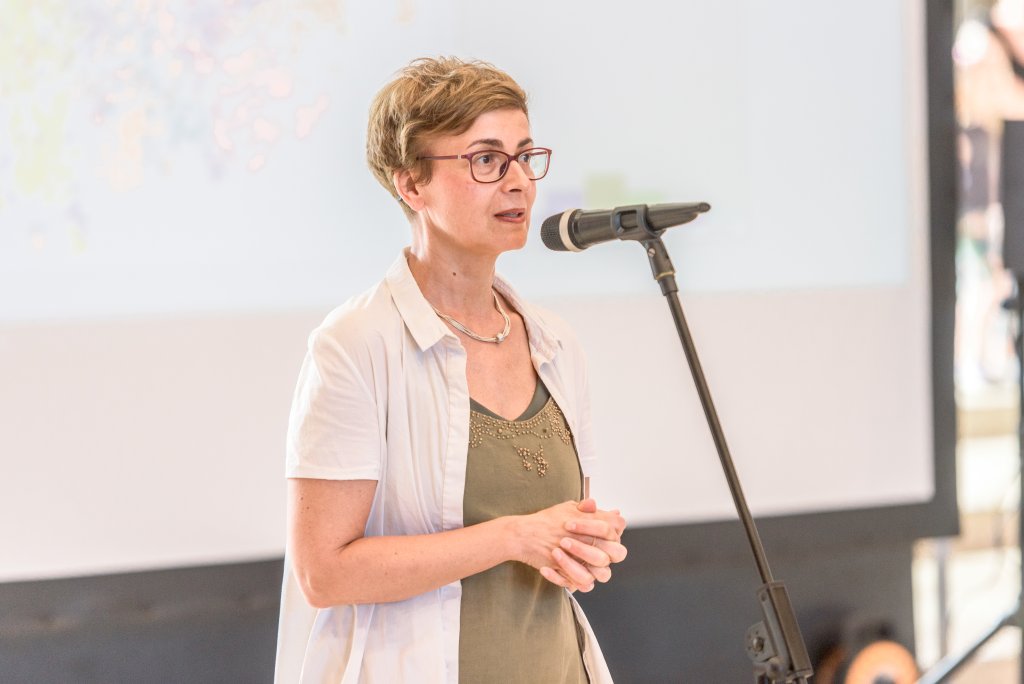
Katinka Hajas collaborated with György Halász, assistant professor at the Department of Construction Materials and Technologies within the Faculty of Civil Engineering (ÉMK), on a project exploring material science and material structure. Her work, titled “Anxiety Mills” had been difficult to picture based on its concise description (“metal plates sounded by 3D-printed concrete sculptures”). In person, however, the experience was all the more powerful, with blocks crunching and wobbling on the small pebbles scattered underneath. After a while, it became apparent that the movement was not merely from being pushed but from a built-in motor, designed and programmed by József Molnár, master instructor at the Department of Mechatronics, Optics and Mechanical Engineering Informatics within the Faculty of Mechanical Engineering (GPK).

“This was also a crucial aspect of the production,” explained György Halász to bme.hu, “in addition to the fact that we produced the shape itself with the 3D concrete printer in our laboratory, ensuring that the sculpture was not just a static object.” As an architect, he approached the subject from the perspective of not only engineering but also the applied arts, which allowed for smooth collaboration with Katinka Hajas. However, he admitted that at times it was more challenging than expected to align with the artist’s strong, suggestive vision. (Editor’s note: you can read an earlier bme.hu article on 3D concrete printing by clicking here.)
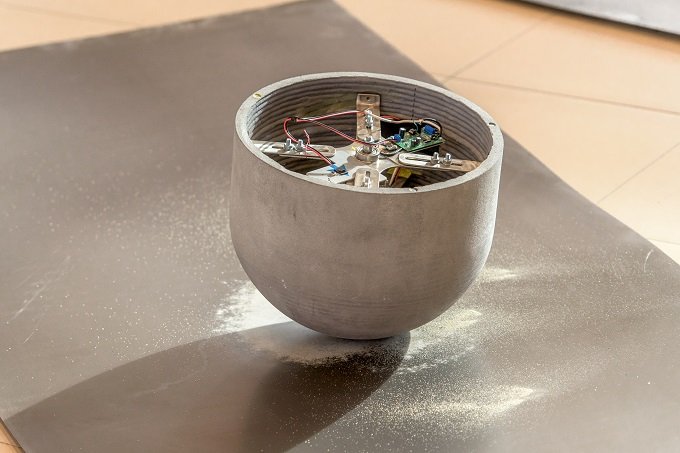
According to the artist, 3D printing provided the opportunity to experiment and to create objects much more quickly and with fewer tools compared to traditional methods. A concrete shape like this one can be printed in just a quarter of an hour, although this excludes the time needed for preparation and mixing the material, as well as programming. “The latter is also a time-consuming task, as the machine is not thought- or voice-controlled, though we may reach that point one day,” Halász added.

Composer Andrea Szigetvári’s project on artificial intelligence and copyright was an integral part of the concept of Anxiety Mills. As part of the process, the composer consulted Anikó Grad-Gyenge, Vice-dean for Innovation of the Faculty of Economic and Social Sciences (GTK), and Bertalan Forstner, Deputy Head of the Department of Automation and Applied Informatics within the Faculty of Electrical Engineering and Informatics (VIK). Szigetvári described her AI-enhanced, interactive work combining saxophone and electronics as a corpus experiment exploring authorship in the age of AI-enhanced creation. The project employed AI to categorise elements of the sound database based on timbre. During the concert, this was performed as “comprovisation”, blending composition and improvisation. The AI composed from the corpus stored on the computer, guided by Szigetvári’s instructions, responding to live saxophone music and the sounds of Hajas’ moving concrete sculptures.
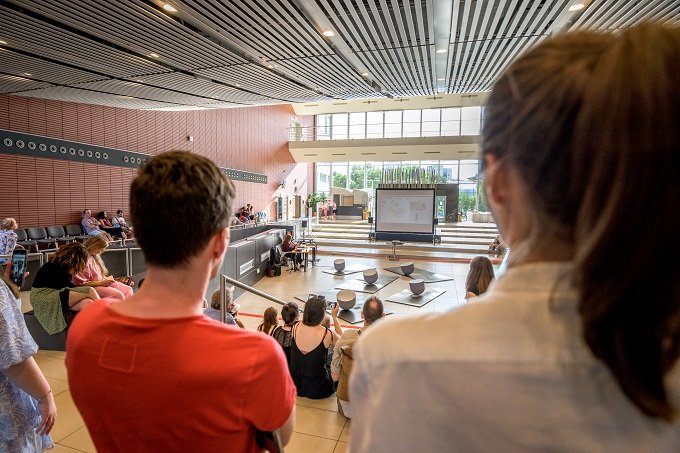
Szigetvári aptly termed it an experiment: even those familiar with experimental music found the sound stream generated by the intelligent software and its operator in response to saxophonist Erzsébet Seleljo’s improvisations to be an acquired taste.
“We initially approached this project with the preconception that artificial intelligence poses a threat to human creativity and might usurp people’s jobs,” explained Anikó Grad-Gyenge, whose background is in music history, about the ten-month collaboration. “In contrast, Andrea is extremely curious and open-minded, so she sees AI as a tool. The collaboration focused on how she could integrate the technology developed by Bertalan Forster and his computer science students into her creative process, resulting in a unique artistic production.”

In 2023, the Art Residency Programme expanded internationally, with BME announcing an international scholarship that brought Spanish artist Javier Aparicio Frago to BME for a two-week residency. Additionally, at the October 2023 EELISA (European Engineering Learning Innovation and Science Alliance) conference in Bucharest, the BME Art Residency Programme was invited to participate in a section dedicated to projects exploring the relationship between science, technical innovation, and art. As EELISA unites leading technical universities in Europe, the inclusion of the programme in this cooperation is highly significant.
For now, the future of the residency programme is uncertain, as the sponsorship contract with the PADME Foundation of the Hungarian National Bank has expired. BME is now looking for a new sponsor to ensure the continuation of this initiative.

PG
Photos: Balázs Mudrák
